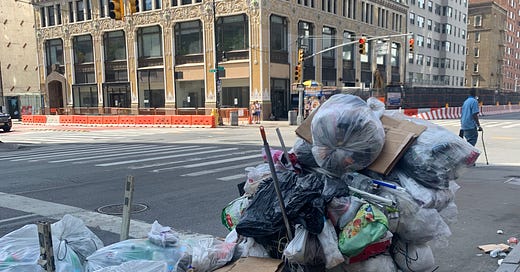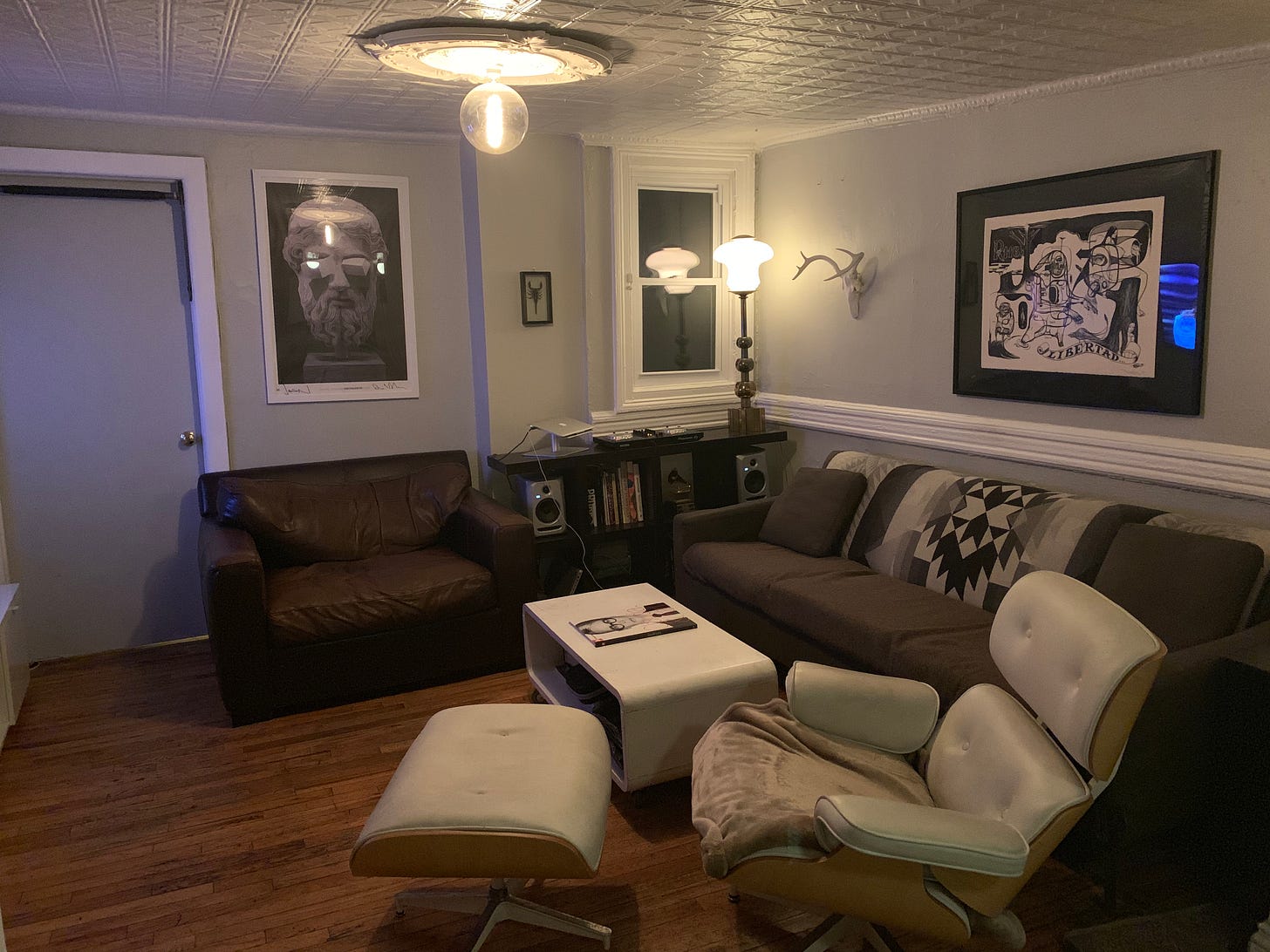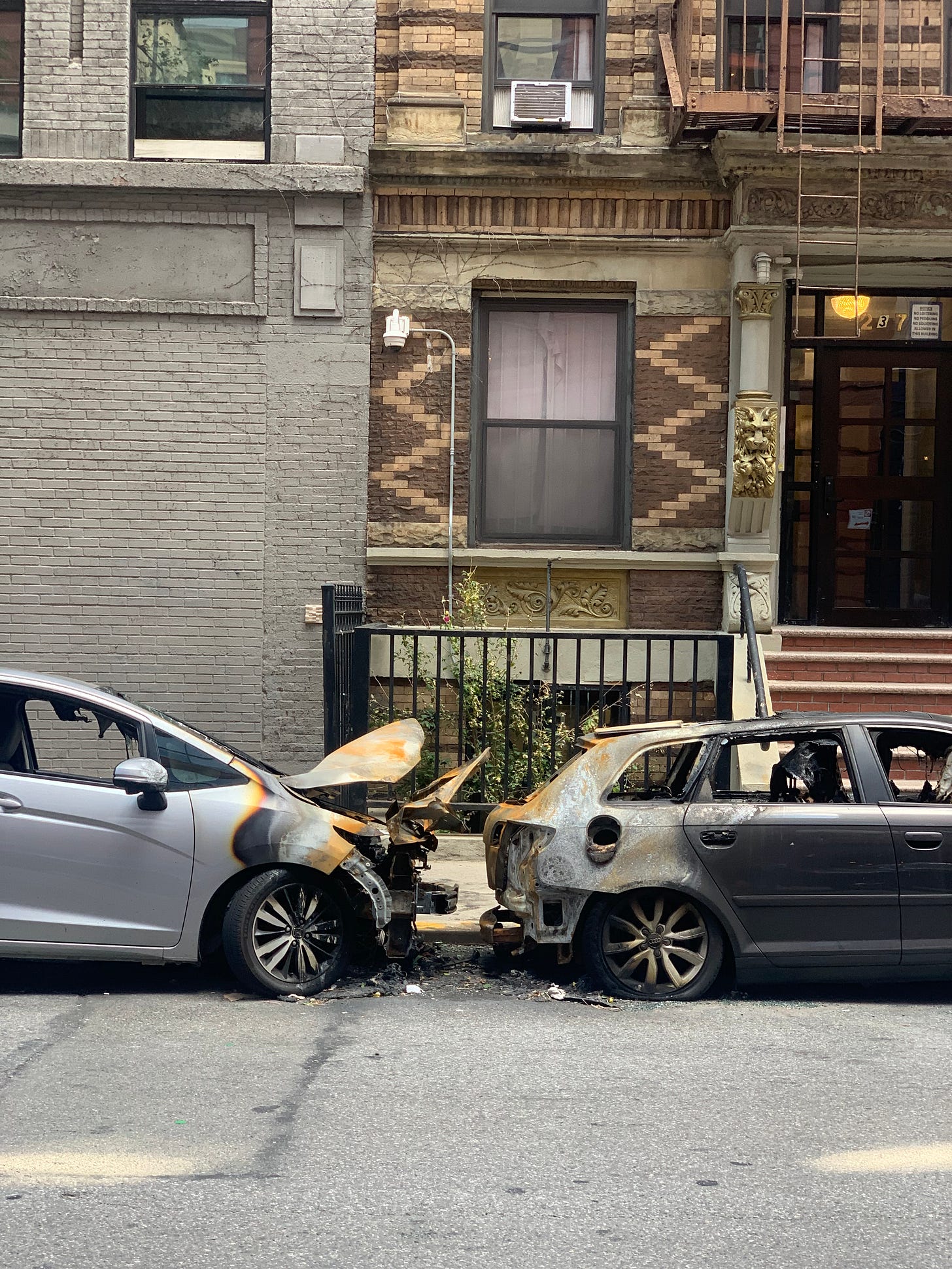Back in 2018, NYC won an award for being the safest major city in the world. My neighborhood at the time had a reputation for being gritty, but it was safe enough for me, clean enough that celebrities didnt mind living just one or two blocks away, and had a fairly strong sense of community that I still miss to this day. At any given hour of the night, I would be returning home and encounter neighbors of mine, out walking their dogs in their slippers and conversing with each other. We would hug like family members when we crossed paths, and in a city that’s often described as lonely, it felt refreshing to know that your neighbors actually cared about you.
Do you know those cliche scenes on television where perfect families sit together at dinner and discuss their workdays and current events? For my community, this became our local coffee shop at 8 am, and it was every bit as wholesome as our favorite childhood sitcoms.
We would dogsit for each other, gift each other pieces of unwanted furniture, and exchange keys so neighbors could water each other’s plants while out of town. There were A-list actors in our group, gay rights activists, comedians, models, art dealers, and even an old psychologist from Eastern Europe who often gave us unsolicited dating advice. Coffee shop staff included, there were about 40 of us who knew the most intimate details of each other’s lives.
While the group skewed left in its political beliefs, there were only a small handful of minor disagreements amongst our 10+ years of daily dialog that weren’t easily hashed out over a single cup of coffee. To this day, I have group texts from these people approaching their 10-year anniversary that are filled with jokes, happy birthday wishes, and adults who don’t hesitate to say “I love you” to their neighbors.
These are the memories of living on 14th Street that I will always cherish.
Sure, it was gritty, but over the twelve years that I lived there it was trending in the right direction. It was gritty but safe. I would regularly bump into celebrities and supermodels out walking their dogs and running errands, the new condo building marketed itself as “a place James Bond would live,” and despite the streets being loud and our sidewalks filthy, the quality of life was still high enough to provide me with some of the best years of my life.
Of course, after the summer of 2020, everything changed.
The type of pleasant occurrences that frequently happened to me in my neighborhood no longer happened. The new norm within 100 feet of my front door became traumatizing encounters with drug addicts and people suffering from severe mental illness.
One day before COVID, I stepped out of my front door to walk my dog and the first thing I saw was supermodel Irina Shayk approaching me to compliment his charming underbite and play with him for a moment. One day after COVID I stepped outside and there was a homeless man laying on the sidewalk, urinating straight up into the air and back onto himself like some type of deranged human fountain. The vast difference between these two experiences accurately portrays how surprisingly pleasant my dirty street used to be before 2020, and how depressingly grim it became after the summer of COVID, riots and crippling lockdowns.
After two entire years of countless traumatic experiences within 100 feet of my front door, I finally realized that this chapter of my life was officially over, and the little moments that often made my day were not coming back.
The buildings in my neighborhood stayed the same, giving the illusion of familiarity, but the daily experience of life in my neighborhood were now completely different. The local pharmacies got robbed every day, the small businesses suffered from regular break-ins, homeless people took over the outdoor dining sheds, and fentanyl addicts now blocked the subway entrances.
The neighborhood was always loud, but there was a new sound that I could now hear from my bed in the middle of the night that I never quite managed to adapt to. It was the screams of people with severe mental illness having drug-induced psychotic episodes less than 100 feet from my bed, and it happened almost every night.
I could live with the sirens, the construction, the firetrucks barreling down the avenues, but I was never quite able to adjust to the sounds of mentally ill people screaming, crying, and threatening others at all hours of the night. These sounds trigger something deep in your DNA that signals to your brain that there is danger close by and that you need to wake up NOW if you want to survive.
I don’t know exactly how many times I woke up in my own bed last year to the sound of a deranged madman screaming about how he was going to kill someone, but it was enough for my girlfriend to say: “I don’t understand how you live like this, I hate it here” at least once a week until my lease was up.
After two years of not being able to sleep through the night, I finally gave up. It was affecting my mental health, I was always tired, and my body chemistry was trapped in a permanent state of fight or flight. I loved my apartment, my community, and my life, and from what I could tell it loved me back. In the summer of 2022, I gathered up my belongings and moved to the Upper East Side, a neighborhood where I did not work, had no friends, nor did I know a single person outside of two political contacts. However, in my new neighborhood, my new (and now much lower) standards for living criteria were finally met:
When I go to sleep at night, I no longer hear the sounds of an open-air insane asylum.
I know that this piece isn’t filled with links and data. It’s not a deep dive into the complexities of urban policy, but does it have to be? Maybe it can serve as a message to local politicians who ignore their constituents’ cries about homelessness, vagrancy, and quality of life. The situation in my neighborhood (which I did not want to leave) was so bad that I couldn’t sleep for two entire years of my life. I put on weight, I made mistakes at work, and I couldn't be the high-functioning person that my job or my city needed me to be. I couldn’t watch a movie at night without it being interrupted by the screams of mentally ill homeless people, and if anyone was ever leaving my apartment after 10 pm, their fears as to what they might encounter just outside my front door were warranted.
Something needs to be said about what level of disorder our politicians are willing to accept, and if that pairs up correctly with the actual needs of local residents. My old neighborhood is now minus one friendly neighbor with deep roots in the area, and up 20+ transient drug-addicted people with severe mental illnesses. All the while, local politicians insisted that this same group of transients ruining my neighborhood were just “my neighbors” down on their luck.
How is someone “my neighbor” if they’ve never been here before, don’t pay rent, disrupt local businesses, terrorize residents, and don’t have the slightest interest in being part of the local community? Activists can save the Orwellian doublespeak for those who are dumb enough to believe it, but actual communities aren’t fooled by childish language games. We shouldn’t even have to say this, but the drug addicted man from far away who’s currently having a psychotic breakdown in the doorway of our local pharmacy is not our neighbor.







Great piece. PS, you just described Hell’s Kitchen as well